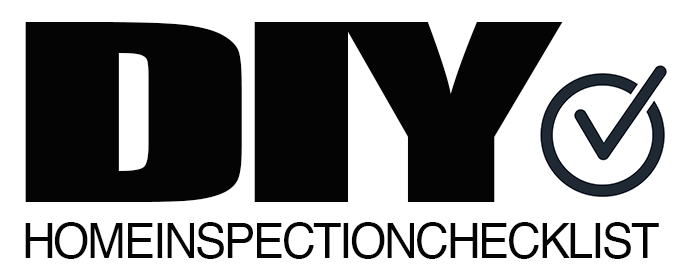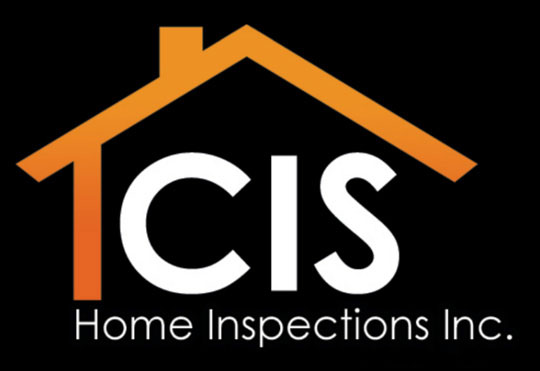
CHIMNEYS PAGE
Free DIY Home Inspection Checklist
CHIMNEYS
- DIY Tip:
- Because you have no idea what condition the flue liner is in by a visual inspection or even by simply looking into the flue from the top of bottom, we always suggest a chimney inspection prior to your purchase.
- If the house possess a new chimney, you should consider looking into permits or warranties
Factory Built Chimney
- Chimney Is okay
- Chimney Sways when pressed upon (DIY TIP: Have contractor evaluate)
- Cracks located within the chase stucco finish
- Damaged foam trim at the top of the chase
- Wood rot trim at the top of the chase
- Chase cover sunken and holds water (DIY TIP: Have contractor evaluate)
- Rusted chase cover (* May be a potential safety issue-have this inspected by a chimney contractor)
- Missing / Damaged spark arrestor
- Chimney is short and does not meet the 3-2-10 rule (*DIY TIP: Have contractor evaluate)
- Chimney was added – Check for permits
- *It is always suggested that the inner flue liner of every chimney system be inspected by a professional with a camera
Masonry Chimney
- Chimney Is okay
- Chimney Sways when pressed upon
- Cracks within the brick or grout (*DIY TIP: Have contractor evaluate)
- Ash dump door rusted or missing
- Wood trim (eave / fascia) makes contact with the chimney
- Missing or damaged spark arrestor (DIY TIP: Have contractor evaluate)
- Cracks within the chimney cap (DIY TIP: Have contractor evaluate)
- Chimney is short and does not meet the 3-2-10 rule (*DIY TIP: Have contractor evaluate)
- Chimney was added – Check for permits (DIY TIP: Have contractor evaluate)
- *It is always suggested that the inner flue liner of every chimney be inspected by a professional with a camera
Pre-Cast Chimney
- Chimney Is okay
- Chimney Sways when pressed upon (DIY TIP: Have contractor evaluate)
- Cracks within the exterior walls of the chimney (*DIY TIP: Have contractor evaluate)
- Ash dump door rusted or missing
- Missing / Damaged spark arrestor (DIY TIP: Have contractor evaluate)
- Chimney is short and does not meet the 3-2-10 rule (*DIY TIP: Have contractor evaluate)
- Chimney was added – Check for permits
- Cracks within the chimney cap
- It is always suggested that the inner flue liner of every chimney be inspected by a professional with a camera
Free-Standing Vent Stack
- Vent Is okay
- Vent Sways when pressed upon (DIY TIP: Have contractor evaluate)
- Vent is rusted deteriorated
- Vent is not properly supported (DIY TIP: Have contractor evaluate)
- Vent is short and does not meet the 3-2-10 rule (*DIY TIP: Have contractor evaluate)
- Vent was added – Check for permits
- It is always suggested that the inner flue liner be inspected by a professional with a camera
Gas Appliance Termination
- *It is always suggested that the inner flue liner of every chimney be inspected by a professional with a camera
- *You must possess the manufactures manual for installation in order to properly inspect these types of systems
INTERIOR FIREPLACE
Factory built Fireplace
- Fireplace Is okay
- Fireplace flue is disconnected (*DIY TIP: This is a hazard – DO NOT USE FIREPLACE – Have contractor evaluate)
- Damper is stuck open / closed (*DIY TIP: This is a hazard – DO NOT USE FIREPLACE – Have contractor evaluate)
- Damper needs to be blocked in the open position when gas logs are present (*DIY TIP: This is a hazard – DO NOT USE FIREPLACE – Have contractor evaluate)
- Fireplace flue contains an excessive amount of creosote (*DIY TIP: This is a hazard – DO NOT USE FIREPLACE – Have contractor evaluate)
- Gas pipe penetrating the refractory needs to be sealed (*DIY TIP: This is a hazard – DO NOT USE FIREPLACE – Have contractor evaluate)
- Gas valve is inoperable
- Refractor is cracked / deteriorated / or otherwise modified (*DIY TIP: This is a hazard – DO NOT USE FIREPLACE – Have contractor evaluate)
- The grate is not the same grate that came with the “Listed” fireplace system
- The grate is installed backwards (* This is a hazard and should be corrected prior to use)
- The doors are missing – (*Factory built fireplace require their “listed” components for use)
- The doors require service for ease of operation
- No screens present
- The gas bib is too far forward
- A wood burning / pellet stove was inserted into this box (*DIY TIP: This is a hazard – DO NOT USE FIREPLACE – Have contractor evaluate)
- Cracked materials in the hearth
- Log set is too large for this fireplace (DIY TIP: Have contractor evaluate)
- The “burn pattern” on the refractory is not centered (DIY TIP: Have contractor evaluate)
- There is soot on the exterior of the fireplace suggesting poor drafting (* This may be a hazard and should be corrected prior to use)
- The hearth extension is missing (*DIY TIP: This is a hazard – DO NOT USE FIREPLACE – Have contractor of this trade evaluate)
- The hearth extension is too small (*DIY TIP: This is a hazard – DO NOT USE FIREPLACE – Have contractor of this trade evaluate)
- The hearth extension is combustible material (*DIY TIP: This is a hazard – DO NOT USE FIREPLACE – Have contractor of this trade evaluate)
- The hearth extension has been added – made of wood (* This may be a hazard and should be corrected prior to use)
- There is insufficient clearance to combustible material surrounding the fireplace opening i.e. mantel etc… (* This may be a hazard and should be corrected prior to use)
- The mantel is loose
Masonry Fireplace
- Fireplace Is okay
- Fireplace flue is cracked (* This may be a hazard and should be corrected prior to use)
- Mortar is missing within the Throat Under the first liner Firebox (* This may be a hazard and should be corrected prior to use)
- Mortar is missing from within the fire brick / Tuck-and point is needed (* This may be a hazard and should be corrected prior to use)
- The damper is frozen inoperable
- The damper should be blocked in the open position with gas logs present (* This may be a hazard and should be corrected prior to use)
- Screens are missing and therefore suggested
- The grate is missing / Deteriorated
- The gas valve is frozen
- The hearth extension is higher than the inner hearth
- The gas bib is too far forward
- There is soot on the exterior of the fireplace suggesting poor drafting (* This may be a hazard and should be corrected prior to use)
- The hearth extension is missing (*DIY TIP: This is a hazard – DO NOT USE FIREPLACE – Have contractor of this trade evaluate)
- The hearth extension is too small (*DIY TIP: This is a hazard – DO NOT USE FIREPLACE – Have contractor of this trade evaluate)
- The hearth extension is combustible material (*DIY TIP: This is a hazard – DO NOT USE FIREPLACE – Have contractor of this trade evaluate)
- The hearth extension has been added – made of wood (* This may be a hazard and should be corrected prior to use)
- There is insufficient clearance to combustible material surrounding the fireplace opening i.e. mantel etc… (* This may be a hazard and should be corrected prior to use)
- The mantel is loose
Gas Appliance Fireplace
- *This type of fireplace is suggested to be inspected by a profession with access to the installation standards and listed instructions prior to use.
- The gas appliance operated by switch
- There is a standing pilot (*This may be a hazard)
Wood / Pellet Fireplace / Stove
- *This type of fireplace (freestanding stove) is suggested to be inspected by a profession with access to the installation standards and listed instructions prior to use.
- There is insufficient clearances to combustible materials at the Side Front Rear of this unit (*DIY TIP: This is a hazard – DO NOT USE FIREPLACE – Have contractor of this trade evaluate)
Free DIY Chimney Inspection Checklist
In many cases, free things from the net prove to be more or less a waste of time. Not in this case, however. On the contrary. Our FREE chimney inspection checklist, along with the entire free DIY home inspection checklist is chock full of useful tips for you to be able to conduct your very own home inspection.
Summary
Reviewer
Marc M.
Review Date
Reviewed Item
This is a fantastic way for DIYers to conduct their own home inspection without the use of a traditional home inspection company.
Author Rating





